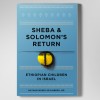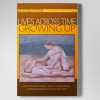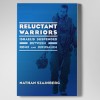Ethiopian Children growing up in Israel: Identit(ies), Relationships, Inner lives in Transition
The next psychoanalytic challenge is to reach across at least three boundaries: two cultures with two languages and the boundary of childhood. I have started a study of Ethiopian Fallash Mura immigrants, who were force-converted to Christianity one century ago, who have immigrated to Israel, and to study their children’s development.
Ironically, as a child therapist, I find children more available, readier to express their inner lives than many adults.
How do these children develop their identities, their emotional lives, coming from a deeply rural, impoverished, highly traditional, hierarchical pre-literate society, then immersed into Israel, a highly-educated society with first-world technology and the associated cultural values? In rural northern Ethiopia, boys of 14 or 15 had their own flocks of goats and were expected to earn their way. Girls of 14 or 15 were engaged or married. Fathers carried much weight. Many of the mothers were tattooed with crosses on their foreheads, cheeks, necks as children, and continued to accumulate tattoos even after emigration and professing Orthodox Judaism. In Israel, life is quickly flipped. Children are in school until 18, then off to the army. Girls are legally not permitted to wed before 17 or 18. All child support from the government is funneled through the mother; many Ethiopian men complain that Israel is a women’s country. Vocations useful in rural Gondar are not feasible here: weaving, blacksmithing and pottery making, goat herding. Children spend much of the day in school, become fluent in Hebrew and become translators for their parents, who are now illiterate in two languages, to paraphrase Berthold Brecht.
The challenges to integration are great. Previous Ethiopian immigrants who had maintained their Jewish identity, still showed greater difficulty both integrating and making progress in Israeli society compared to other immigrant groups: rates of juvenile delinquency, school drop out and drug use are several-fold higher. Ethiopian boys adopt Rastafarian identities. Because of the long waiting period in Gondar, some fathers make aliyah first, leaving wife and children behind. In Gondar, it is culturally acceptable for a woman living alone to be taken-up by any man who chooses to; this is not considered rape in that culture. If she becomes pregnant and gives birth by that man, he and his family expect her to take the child to Israel and send money to support the man in Ethiopia.
In Israel, school class size approaches 40 children.
In light of this, in the ‘90’s Elie Wiesel and his family have established two after school programs in two communities: Ashkelon, a Mediterranean city, and Kiryat Malachi (“City of Angels”), a town in the northern Negev, about ten minutes drive from the better-known Sderot.
In this little city of angels, I began visiting, consulting and have started a study of these children’s development and their relationships. I begin with 5- 6 year olds, knowing that this is the earliest age at which I would have access, and believing from much of our psychoanalytic developmental research, that earlier is better and often predictive of later development (Massie and Szajnberg, 2005, Sroufe, et. al. 2005).
Now, to most scientific audiences, I could say that my “instruments” and measures are the current standards for learning about behavior, inner life, achievement and attachment for these children and their mothers: academic scores, I. Q., Child Behavior Checklist, projective drawings such as Draw=A=Person, House-Tree-Person, Kinetic Family Drawing, the Waters-Deane Q-Sort for attachment and for mothers, the Attachment Projective Test. All this would be true.
But, these would not be as effective if I could not as an analyst, as a child therapist, know how to enter the inner worlds of others, be invited to enter. Good cultural anthropologists know this also: to immerse oneself in a community, to find “informants” who can help cross-cultural boundaries. But, to enter the worlds of children, intriguingly seems easier, as Winnicott showed in his Squiggle game book. The first case in that book was a Finnish boy; of course, Winnicott had a translator to describe what the boy was saying about his drawings; but the boy was engaged by not only the visual drawing-dialogue with Winnicott, but also by Winnicott’s ability as a child therapist to engage the child, to show the child his interest in the boy’s inner life, not for voyeuristic reasons, but for the boy’s sake.
Squiggle game: engaging imaginations; DWW what is child’s purest transference fantasy of analyst.
Here, among analysts, I can say that before I used various “objective” instruments, the major instrument was myself, my training to listen and observe. Going to Beit Tzipora weekly, entering the classrooms, the playground at breaks, helping read or playing, are techniques that come from child therapy, and also from Whyte’s participant observer approach which he pioneered in Street Corner Society in the 1930’s. When, after weeks, the children begin to seek me out, ask me to visit their class, help fix a lacrosse ball, give them airplane rides, or just hold my hand to walk back to the classroom from which a boy had recently left in despair. I become an instrument to learn about the inner worlds of these children, in such a way that they feel connected and in such a way that I might be able to learn something to bring to colleagues. Something about how identity develops in such a great leap across cultures, language and even eras.
What happens within the room, and within me when a child makes a drawing, then tells a story. There descends a quiet, an intense quietude. Something envelopes both me and the child. I ask for a ‘person”, a girl asks, “ Can I make a heart first?” Then, she rests her head on her left arm and begins drawing.
Orna’s story: Family: Micky Mouse and two sisters, 15 and 16. In Hot air balloon. That’s the family; parents died last week. (?) they feel beseder. M M takes care of them; holds the balloons rope, so the sisters won’t fall. Parents were M’s too.
Aviel: (Girl?). Can I draw a war? It’s a dream. Castle with King Saul. David and Goliath. Blood runs down “goliaths nose (he makes a disticnct line with his finger from forehead ot noes tip, as he did when he drew pic of his dog – I ask about this) Yes, the white line on my dog’s noes means he is dangerous. That’s why we put a muzzle. Saul drawn as if standing on Goliath’s head. Next to him is KKing Saul, then Saul dead, with shield at side. As he walks out: he says he is Saul; Saul killed, but after Solomon, no kings are killed, he says smiling.
Rudy Ekstein once said that when he feels stuck working with a child, he has old teachers perched on his shoulders whispering advice into his ear – what to do next, what to say. As I prepred this talk, I thought of only a few teachers who whisper in my ears as I sit with these children. Bob Levine, the anthropologist taught me about having local informants who know not only the language, but also the gestures, the customs. Bruno Bettelheim, who taught me too many things to summarize, but in this case, being transported into the inner life of the child. Sally Provence, who taught me not only developmental assessment, but particularly bringing out the best performance in a child. Barry Brazelton, who like an orchestra conductor, brings a baby to life, shows even the baby how competent it is, how active the baby is in connecting, coming alive with the world.



